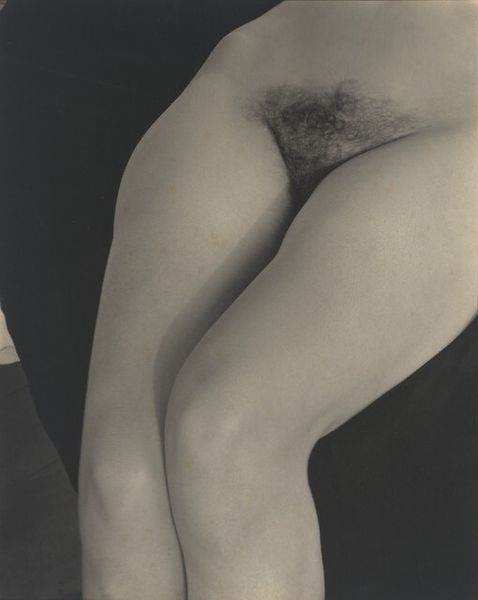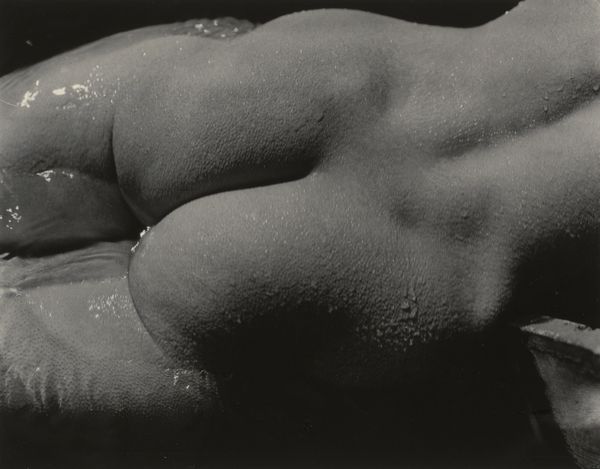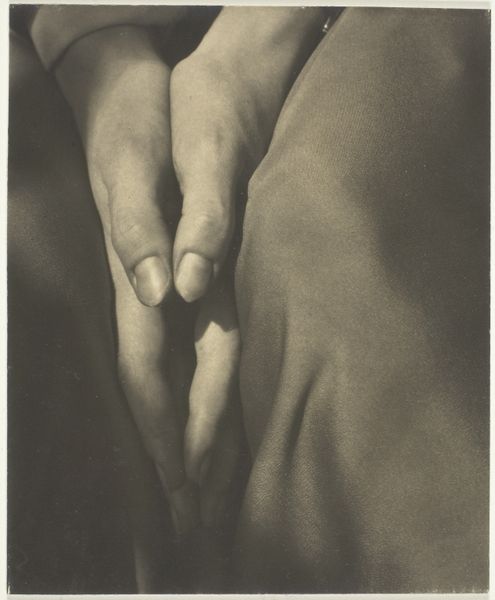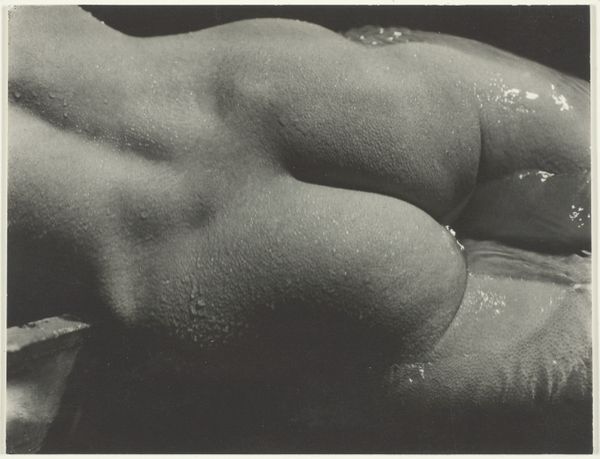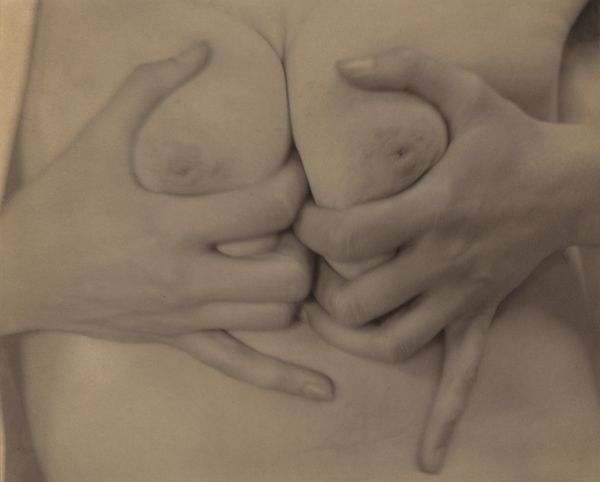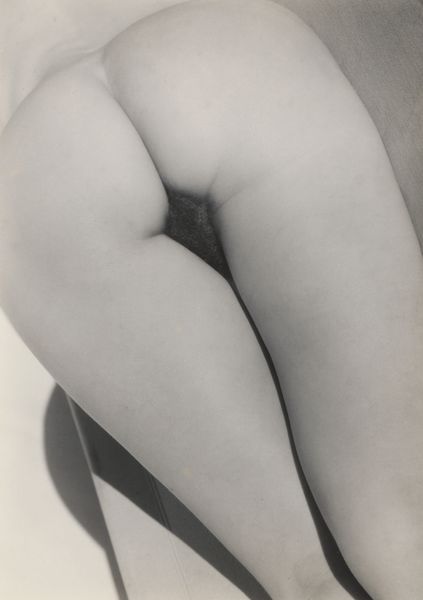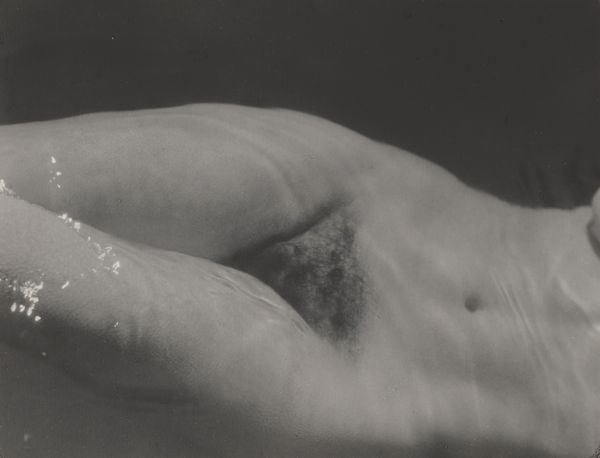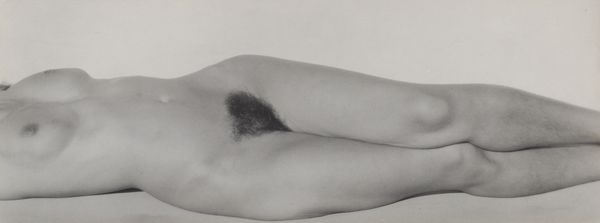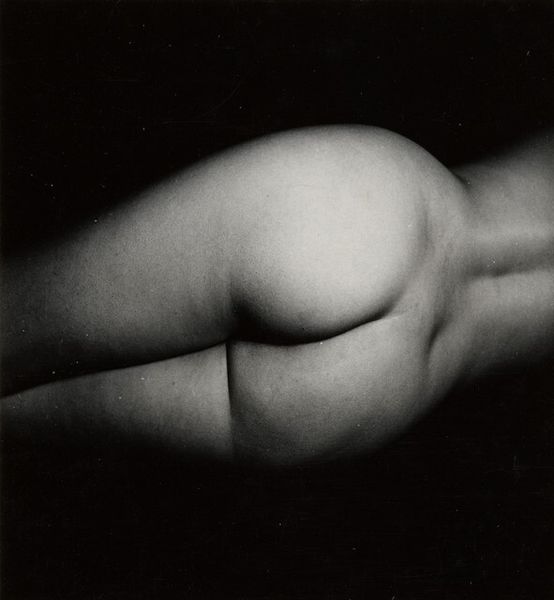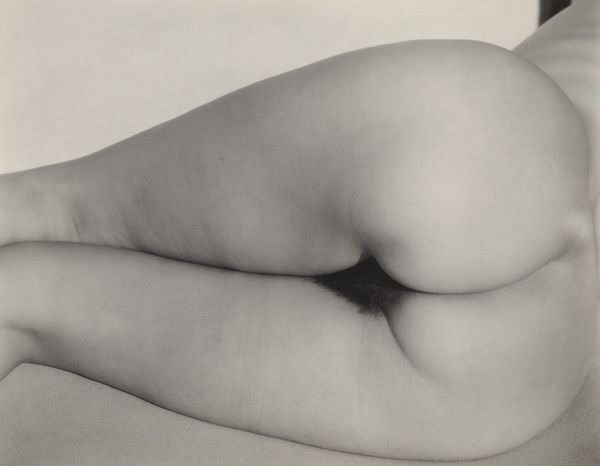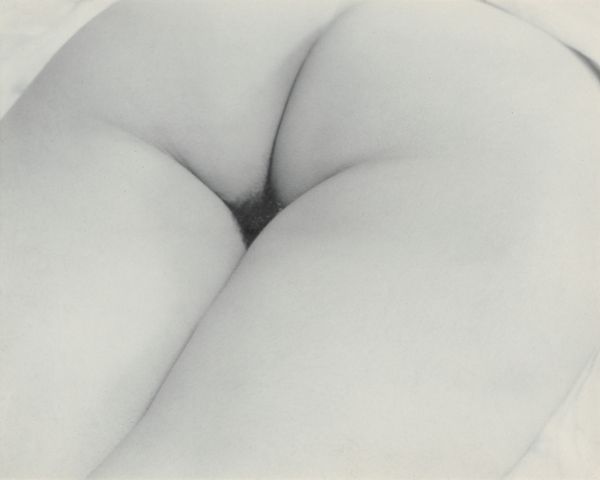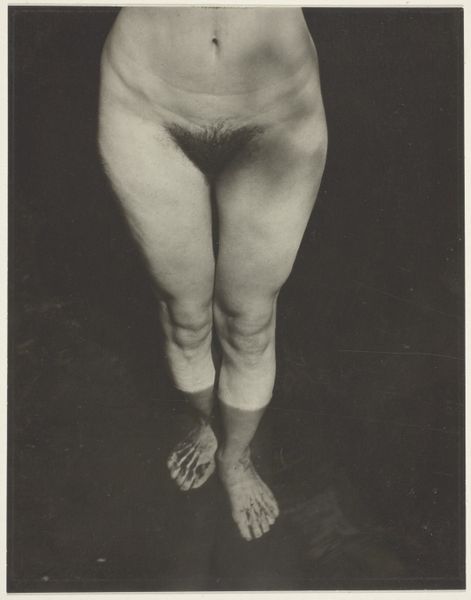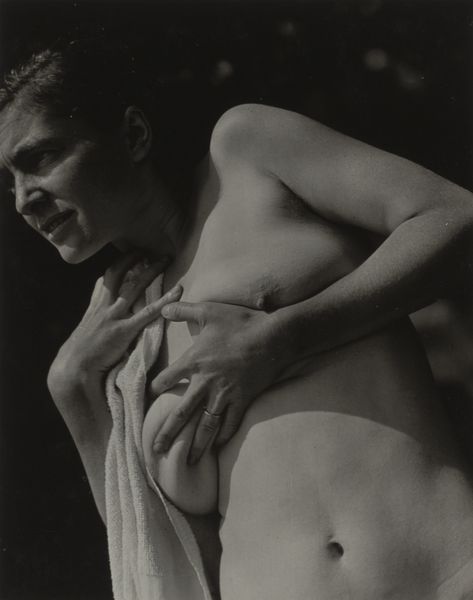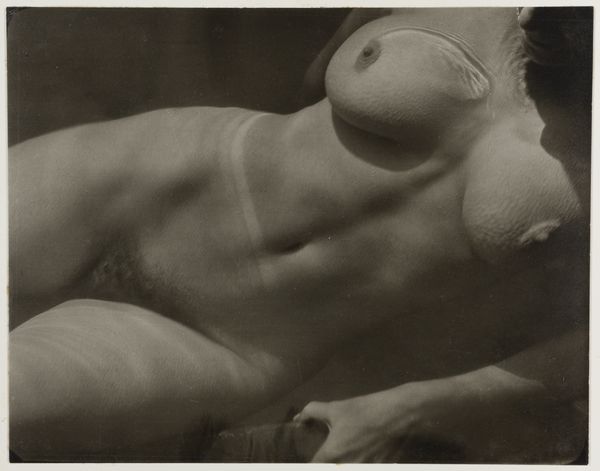
photography, gelatin-silver-print
#
portrait
#
pictorialism
#
photography
#
black and white
#
gelatin-silver-print
#
monochrome photography
#
monochrome
#
nude
#
monochrome
Dimensions: sheet (trimmed to image): 11.7 × 9.6 cm (4 5/8 × 3 3/4 in.) mount: 33.6 × 26.7 cm (13 1/4 × 10 1/2 in.)
Copyright: National Gallery of Art: CC0 1.0
Editor: Here we have Alfred Stieglitz's "Rebecca Salsbury Strand" from 1922, a gelatin silver print. It’s striking how textural it is for a photograph, almost like sculpture. What are your thoughts on it? Curator: Considering this work materially, it's crucial to note the historical context. Stieglitz, known for his Pictorialist approach, embraced photography as a fine art, distinct from mere documentation. The gelatin silver print process, itself a product of industrial chemistry, allowed for sharp detail and a range of tonal values. Look at the even distribution of that grit-like substance across her skin! Editor: It reminds me of those gritty, high-contrast photographs from that time. Is the material and method a form of expression in itself? Curator: Absolutely. Stieglitz’s choice and manipulation of this industrial medium are significant. The application of grit, perhaps through darkroom manipulation, challenges the idea of photography as pure indexical representation. It pushes against traditional boundaries, incorporating elements of craft and tactile experience into what was considered a mechanical process. It invites us to consider the labor involved and the photographer's hand in creating the final image. Editor: So, the material and the process aren’t just means to an end, but actively shape the message of the artwork? Curator: Precisely. How the image was produced becomes inseparable from its meaning. Consider also the social context. Stieglitz championed photography during a period when its status as “art” was heavily debated. By manipulating the materials and emphasizing the process, he asserted photography’s capacity for artistic expression, reflecting the shifting landscape of art production and consumption in the early 20th century. What do you take from this knowing Stieglitz’s dedication to his craft and control of materials? Editor: Understanding his hands-on involvement gives me a deeper appreciation for the image. It feels less like a passive recording and more like a constructed object. I didn't think about photography having materiality in that way. Curator: Indeed. It's a powerful example of how examining materials and processes can reveal deeper insights into art.
Comments
No comments
Be the first to comment and join the conversation on the ultimate creative platform.
